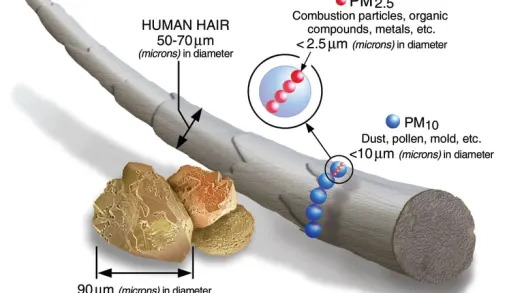WASHINGTON — The U.S. Environmental Protection Agency on Friday said it would tighten national air quality standards for fine particle pollution for the first time since 2012, a move that could lead to tougher limits on tailpipe and smokestack emissions.
Fine particulate matter, or soot, comes from sources ranging from power plants to cars and trucks. It causes lung and heart damage and has been found to disproportionately affect low-income communities, according to EPA. Particulate emissions are a different issue than greenhouse gas emissions.
Vehicles create particulate pollution a number of ways — gasoline and particularly diesel engines create particulates during combustion; and gases created by internal combustion engines can later combine in the atmosphere to form particulates. Electrification of vehicles will help greatly, though even EVs can shed particulates from brake pads and tires.

"Fine particulate matter is both deadly and extremely costly," EPA Administrator Michael Regan told reporters, adding the decision was "based on sound science and a rigorous evaluation of the data that we have at hand."
The proposal would lower the allowable concentration of particulate matter smaller than 2.5 microns, or PM 2.5, to a range of 9 to 10 micrograms per cubic meter (µg/m3) on average per year, from the current 12 µg/m3 in place since 2012. The EPA said it would also take public comment on revising the level to as low as 8 µg/m3, and as high as 11 µg/m3.
Former President Donald Trump's administration had left the 2012 standard in place, despite mounting research that those levels pose a threat to public health.
The EPA estimates that an annual PM2.5 standard of 9 µg/m3 would prevent up to 4,200 premature deaths per year and yield $43 billion in net health benefits in 2032.
Public health and environmental groups said they had hoped for a tougher proposal, and for one during EPA's comment period. The EPA will take public comments and provide additional information on the National Ambient Air Quality Standards (NAAQS) for PM webpage.
"The science is clear that we need standards at the most protective ends of the ranges that EPA's own scientific advisors recommended," said Laura Kate Bender, national assistant vice president at the American Lung Association.
Most members of the EPA's Clean Air Scientific Advisory Committee (CASAC) had recommended that the annual average start in a range as low as 8-10 µg/m3.
The EPA also opted to retain the current primary 24-hour PM 2.5 standard of 35 µg/m3, despite a CASAC recommendation to lower that number to 25 µg/m3.


Sign in to post
Please sign in to leave a comment.
Continue